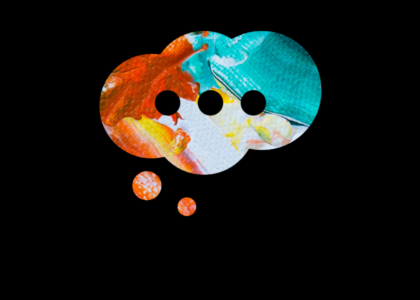Today, our nerdy neuroscience selves get to play, as we ask the question: What happens in our brains when we are truly present? 🧠😍
The Default Mode Network (DMN)
With advances in neuroscience, researchers have been able to use functional magnetic resonance imaging (fMRI) to explore what happens when we make presence a priority.
Studies on meditators and musicians alike reveal a key insight: in states of focused awareness, activity in the Default Mode Network (DMN) significantly decreases.
The Default Mode Network is a group of brain regions that activates when we are NOT focused on the present—when our minds wander, we daydream, or we ruminate.
While the DMN serves important functions like helping us reflect on the past and plan for the future, it also holds our worry, self-criticism, and unproductive looping thoughts.
In essence, the DMN is where many of our negative emotional patterns take root. It is the voice that replays past mistakes, anticipates future challenges, and questions our self-worth.
Why Does the DMN Quiet During Presence?
When we are fully present—whether through meditation, music, or any activity that requires deep focus—our brains shift gears.
Brain regions associated with sensory awareness and emotional regulation, as well as focused tasks, start to come online.
Without the constant chatter of the DMN, we can experience moments of clarity, connection, and peace. This explains why being present can feel like freedom.
When we intentionally cultivate presence, we are training our brains to quiet the noise of the DMN, creating space for more supportive brain states.
That’s why presence isn’t just a feel-good buzzword—it’s a brain state that’s observable and transformative.
That said, most of us are not experienced meditators or professional musicians.
So, how can the rest of us quiet our own DMN?
We learn how to cultivate a state of flow.
Understanding Flow
Like mindfulness, ‘flow’ has become a popular exploration in the consciousness space. Authors like Mihaly Csikszentmihalyi and Steven Kotler have become closely associated with the term, helping bring it into the mainstream.
Flow is the mental state where you are completely absorbed in an activity.
Time seems to disappear, your actions feel effortless, and your sense of self—like in meditation—starts to fade away.
It’s not surprising that extreme athletes, and experts who have achieved a level of mastery, often describe flow states as addictive.
Whether racing down a mountain or playing a pitch-perfect song, their brains are too focused on the present moment to entertain distractions or fears.
Their DMN goes offline.
How Do I Find My Flow?
One of the best ways to cultivate flow is to introduce a new activity.
Flow thrives when you’re operating at the sweet spot between skill and challenge.
If something is too easy, you’ll get bored; if it’s too hard, you’ll feel frustrated.
For experts, maintaining this balance becomes increasingly difficult as they master their craft.
Once someone becomes highly skilled, finding tasks that are challenging enough to engage them deeply can feel like chasing a moving target.
That’s why the novelty and learning curve of a new activity naturally pull you into a state of flow—completely absorbed and fully present.
This is the joy of being a beginner: the freedom to explore, make mistakes, and engage in something purely for the pleasure of discovery.
Master Being a Beginner
I’ve been working with a client for over two years now—a person who has achieved the kind of material success most people only dream about.
A beautiful family, a genuine respect and love for his partner (with whom he co-creates), and a high-figure exit—and yes, in that order. ☺️
When we met, this person had financial and time freedom, but he didn’t know what his next challenge would be.
In some ways, he was more present than ever.
In others, you could say that he was bored.
The day-to-day challenges and rewards of running a business were gone, and with them, a big part of his flow.
So, we began exploring new ways to challenge himself toward growth.
Our question became: could he make his openness, his vulnerability, and his heart—as big and expansive as his exit? ⚡️🫀
The areas in which we find ourselves beginners can often surprise us.
This exploration has led to a depth in relationships across all aspects of his life, including his peers, his children, and the many entrepreneurs who look to learn from him on a regular basis.
Through this process, he discovered that stepping into uncharted territory—not as an expert, but as a beginner—reignited his sense of curiosity and contribution, and ultimately, flow.
Putting It All Together
So, the next time you feel stuck or uninspired, consider starting something new.
There’s magic in stepping into the unknown—embracing the curiosity, the mistakes, and the discovery that come with being a beginner at heart.
It’s in these moments that your brain naturally quiets the DMN and shifts into a state of flow—allowing you to be fully immersed in the present moment. 🌊
Up next, we’ll wrap our exploration of Presence with some tangible tools to help you use what we’ve covered as a foundation to envision 2025.
As always, thanks for embracing this exploration along with me.
